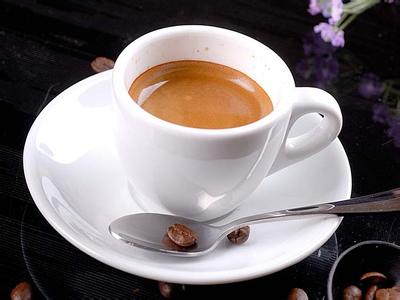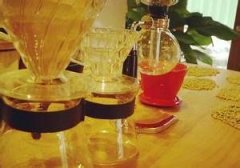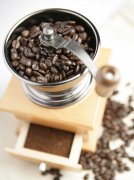The skills of brewing Fine Coffee with filter Coffee

Follicular type
Definition, the roasted coffee beans will be ground, after they become smaller particles, and then its water-soluble components will be dissolved out, this process is generally called follicles.
Relationship between follicles and grinding
Stable grain size
The fever and details can be controlled to a minimum.
Select the particle size suitable for brewing.
Use of fresh grinding raw materials
The relationship between brewing and water
1, water quality
2, H2O
3. The difference between hard water and soft water
The relationship between brewing and temperature
The water temperature is too high
The water temperature is too low
The relationship between brewing and water flow
The current is too thick.
The current is too fine.
The brewing speed is too fast
The brewing speed is too slow.
Equipment, apparatus
Filter paper, filter, fine kettle, heat preservation stove, bean grinder, coffee spoon, cup machine, cooling cloth, timer, etc.
Brewing
Before water injection, warm cup, grind beans, warm pot, cool down
The first bubble, stew, cooling
Second bubble, water injection, extraction process
Too bitter
Too light
Non-concentrated alcohol
The brewing time is too long.
Temperature.
The water temperature is 100 degrees, about 97 degrees.
Cool down by 25-30 seconds, 93 degrees.
Cool down 25-30 seconds, 90-85 degrees.
To 82 degrees into the cup.
To 75-80 degrees on the guest table.
Stable grain size
It means to keep the grinding scale of coffee beans average and the same size. In the process of extraction, the water-soluble components of coffee particles are released more evenly, and the aroma of coffee itself is better played.
The fever and fine quantity can be controlled to the minimum.
This is also one of the reasons why we should choose a large and high-power bean grinder, which can ensure the stability of particle size, because the heat dissipation function of the machine is good, it can effectively reduce the heat of beans when grinding beans, and make the beans in a stable state in the blade. The chance of oxidation with air is minimized, and the content of crushed residue is controlled to a minimum under precision blade grinding.
Select the particle size suitable for brewing.
Generally speaking, the scale of acid coffee beans on the plateau is thicker, while the scale of deep-baked bitter coffee beans is finer.
The coarse grinding degree releases tannic acid and acid fat more easily under the action of water, while the fine scale releases more caramel after carbonization and the bitterness of crude fiber.
Use of fresh grinding raw materials
The freshness of the raw materials is the highest, the contact time with air is the shortest, and the aroma and volatile substances are oxidized least, so the best quality of coffee is guaranteed.
The relationship between brewing and water quality
Water quality
Water quality is an important reason related to the flavor of coffee, the water quality is softer, brewing more sour plateau Arabica species is better, while hard water is more suitable for brewing deep-roasted coffee.
Soft water
Filtered impurities, only CaCO3 and CO2, sodium ions are more than ordinary water
Hard water
In general, our tap water contains more minerals and other impurities than soft water.
The relationship between brewing and temperature
Water temperature is too high, easy to produce scorched bitterness, there will be coffee impurities, but the concentration will be very high.
The water temperature is too low, the aroma is not enough, the concentration is low.
The relationship between brewing and water flow
The current is too thick.
Can not fully extract the water-soluble substances of coffee, dilute the taste of coffee, the aroma will dilute, the flow of water in the filter will be intense, at the same time will produce more irritating smell and taste, which is not conducive to the release of coffee essence.
The current is too fine.
The astringent taste is too heavy, the flow of coffee particles is too slow, the more caffeine extracted, the bitter taste, the release of acids will decrease, and the mellowness and concentration of coffee will increase, which will produce the extremely bitter taste of excessive extraction and destroy the hierarchical sense of coffee taste.
The brewing speed is too fast, the faster the speed, the lighter the taste.
The slower the brewing speed, the slower the flavor.
The flow is high, the downward impulse is large, the brewing is intense, and the fluidity of the water is enhanced.
The flow is low, the downward impulse is small, the flow is gentle, the fluidity is slow, and the extraction time is long.
Important Notice :
前街咖啡 FrontStreet Coffee has moved to new addredd:
FrontStreet Coffee Address: 315,Donghua East Road,GuangZhou
Tel:020 38364473
- Prev

Methods and essentials of brewing follicular coffee
Process, measuring beans, grinding beans, folding filter paper, warm cup, warm pot, cooling, extraction
- Next

Explain in detail how various coffee utensils work in brewing coffee.
1. The working principle of the drip coffee machine when the power is turned on and the switch is turned on, the indicator light is on and the heating tube starts to work. When there is no water in the tank, the temperature rises. When the temperature rises to a certain temperature, the thermostat is disconnected and the heating tube stops working. When the temperature begins to drop, the thermostat is restored and the heating tube continues to work to achieve heat preservation. 2. The working principle of high-pressure steam coffee machine coffee pot has
Related
- Beginners will see the "Coffee pull flower" guide!
- What is the difference between ice blog purified milk and ordinary milk coffee?
- Why is the Philippines the largest producer of crops in Liberia?
- For coffee extraction, should the fine powder be retained?
- How does extracted espresso fill pressed powder? How much strength does it take to press the powder?
- How to make jasmine cold extract coffee? Is the jasmine + latte good?
- Will this little toy really make the coffee taste better? How does Lily Drip affect coffee extraction?
- Will the action of slapping the filter cup also affect coffee extraction?
- What's the difference between powder-to-water ratio and powder-to-liquid ratio?
- What is the Ethiopian local species? What does it have to do with Heirloom native species?

